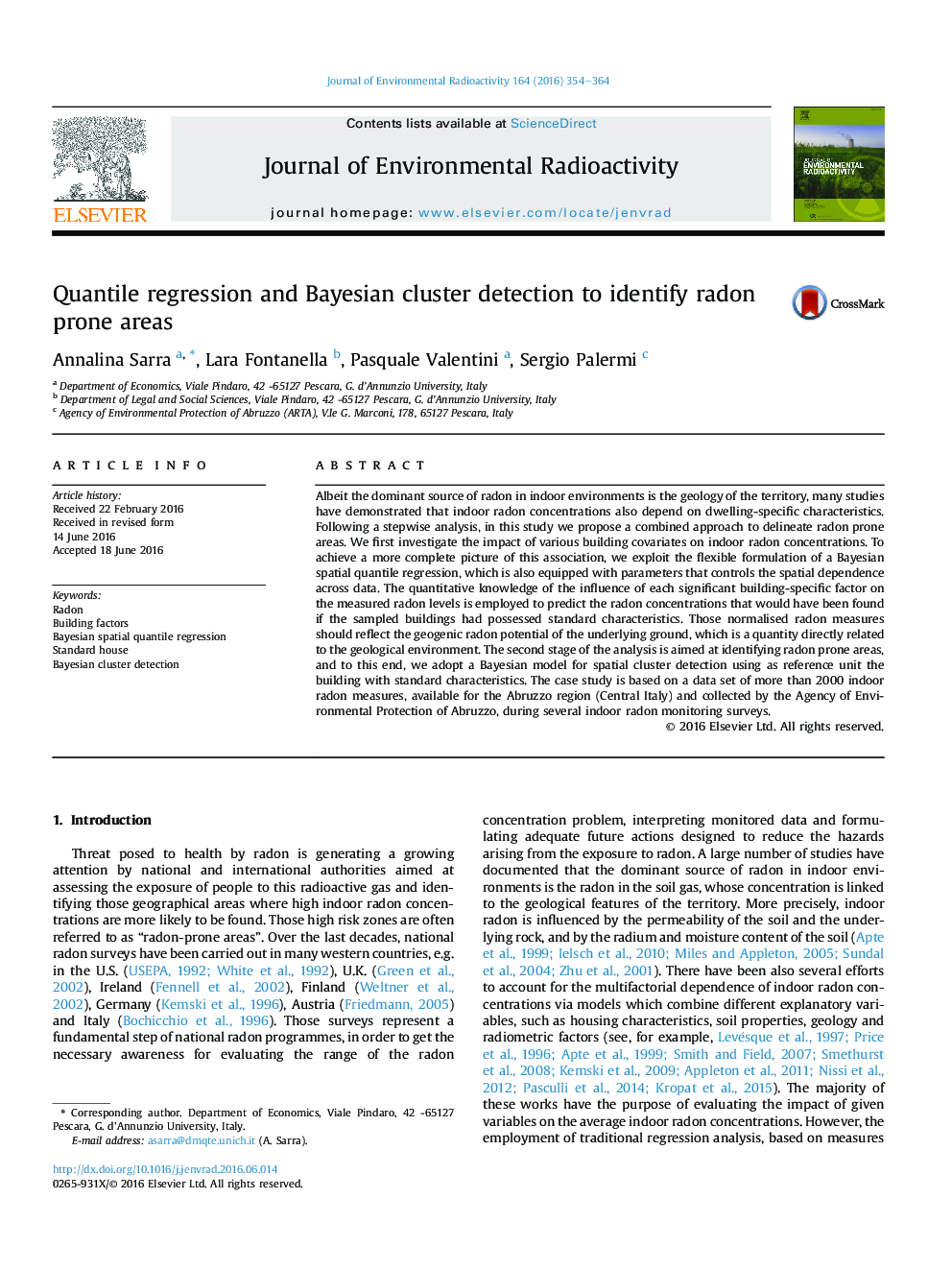| Article ID | Journal | Published Year | Pages | File Type |
|---|---|---|---|---|
| 8081446 | Journal of Environmental Radioactivity | 2016 | 11 Pages |
Abstract
Albeit the dominant source of radon in indoor environments is the geology of the territory, many studies have demonstrated that indoor radon concentrations also depend on dwelling-specific characteristics. Following a stepwise analysis, in this study we propose a combined approach to delineate radon prone areas. We first investigate the impact of various building covariates on indoor radon concentrations. To achieve a more complete picture of this association, we exploit the flexible formulation of a Bayesian spatial quantile regression, which is also equipped with parameters that controls the spatial dependence across data. The quantitative knowledge of the influence of each significant building-specific factor on the measured radon levels is employed to predict the radon concentrations that would have been found if the sampled buildings had possessed standard characteristics. Those normalised radon measures should reflect the geogenic radon potential of the underlying ground, which is a quantity directly related to the geological environment. The second stage of the analysis is aimed at identifying radon prone areas, and to this end, we adopt a Bayesian model for spatial cluster detection using as reference unit the building with standard characteristics. The case study is based on a data set of more than 2000 indoor radon measures, available for the Abruzzo region (Central Italy) and collected by the Agency of Environmental Protection of Abruzzo, during several indoor radon monitoring surveys.
Keywords
Related Topics
Physical Sciences and Engineering
Energy
Nuclear Energy and Engineering
Authors
Annalina Sarra, Lara Fontanella, Pasquale Valentini, Sergio Palermi,
